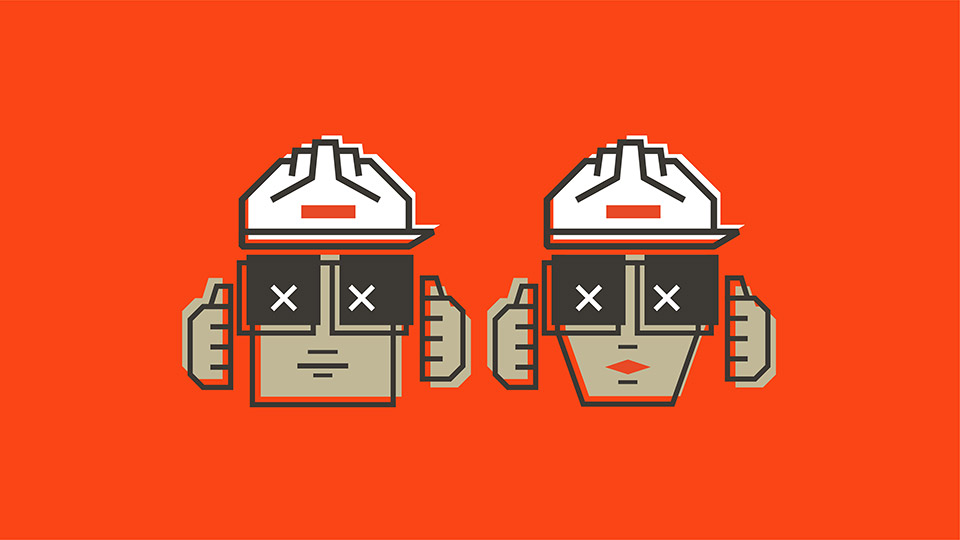“Safety Differently”: Yondr’s approach to HSE
By: Juliane Blohme, HSE Director - APAC

Safety is something we like to do differently at Yondr. But what does that mean exactly? It means moving from the traditional way of only looking at what has failed, and instead analysing what constitutes success. Following Sunday’s World Day for Safety and Health at Work, we’ll be delving into Yondr’s approach to health & safety and how we measure success.
Respond. Monitor. Anticipate. Learn.
Throughout the process of data center design, construction and operation, we aim to create systems in which we can succeed under varying conditions and to be resilient in our performance. This means our approach to Health, Safety and Environment (HSE) differs from the traditional mindset:
| The traditional way… | …versus the Yondr way. |
| Performance is defined and measured by the absence of negatives, leading to reactivity and confusion about what drives success or failure in operations. | Performance is defined by the presence of safety; those things that can enable the creation of what humans need to thrive. |
| The focus on HSE issues is siloed, as if it’s something to be “dealt with” to allow people to get on with work. | We improve performance by improving work, achieving excellence by helping people reliably manage the complexity of balancing HSE goals with other goals. |
| People are a problem to be managed via controls or constraints on their work, ignoring the fact that we rely on people’s adaptability. | Our people are the solution. We believe creating systems and processes to support people’s creativity will create better places to work and excellence in HSE performance. |
The Yondr approach to HSE is guided by our four key principles, which are woven into how we design and improve all systems and processes:
- Respond – Know what to do
- Monitor – Know what to look for
- Anticipate – Know what to expect
- Learn – Learn the right lessons
We built these principles by considering how we wanted to do things differently. HSE traditionally focuses efforts on incident prevention, but this singular focus on failures can lead us to overlook what makes the work successful 99.99% of the time. How do people’s adaptability and creativity contribute to that? Which critical elements may fail eventually?
Since the success of HSE cannot be measured directly – injury rates are the industry standard, but they are statistically invalid and unhelpful – how you choose to measure depends on your beliefs about what creates safety. Yondr focuses on two critical areas for managing and monitoring safety: the capacity to complete high-risk activities (HRA) successfully, and the capacity to learn about what’s happening and adjust based on changing conditions.
Completing HRA successfully – and safely
Our definition of high-risk activities – work that has a high potential to cause severe harm or death, such as working at height and electrical work – is likely aligned with others working in this field.
However, where Yondr is comparatively more innovative is in how we control high-risk activities. Our approach is first and foremost based on our ability to identify and implement those critical controls necessary to stop the worst events from occurring.
If an incident were to occur, critical controls are the only thing standing between the person and a catastrophic event.
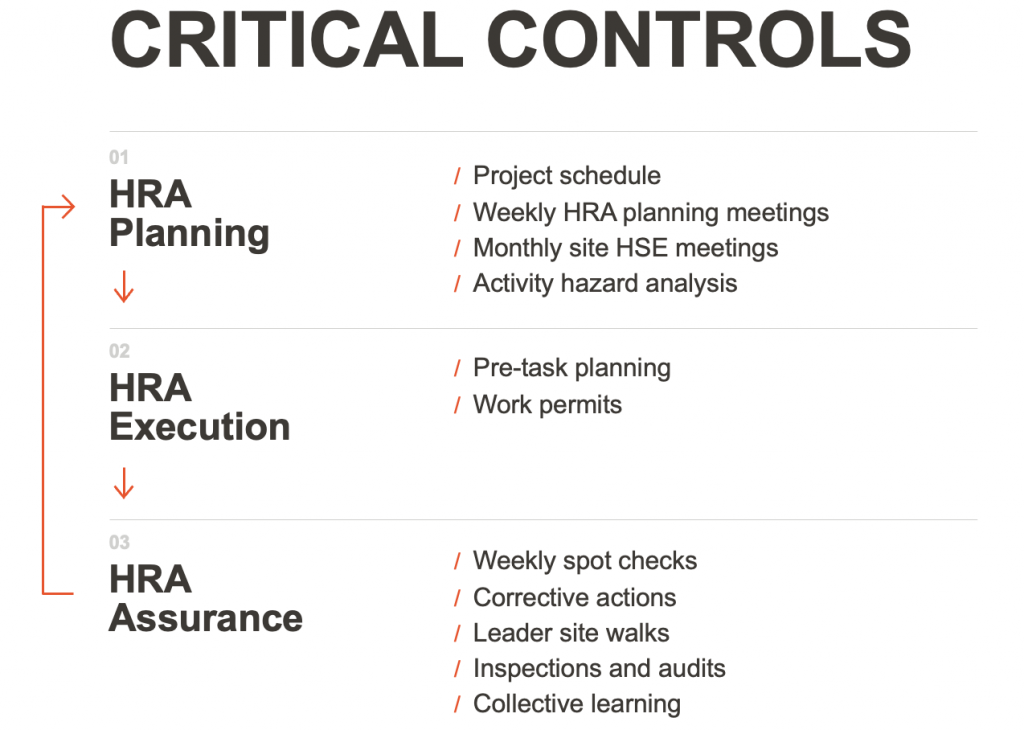
The critical control assumes that we can never fully eliminate uncertainty; negative events will occur, so we should build our systems to absorb those events without catastrophic failure.
Effectiveness
We ask contractors to evaluate critical controls for their effectiveness through a variety of methods, such as weekly spot checks, weekly HRA in depth planning and daily pre-task planning site plans that display where high-risk activities will be executed on site and what critical controls they require.
Incidents involving HRA are categorised into a 4×4 matrix, based on whether the critical controls were 1) present or not present prior to the HRA, and 2) if the critical control was or would have been effective or not effective at preventing a catastrophic outcome of any incident/failure.
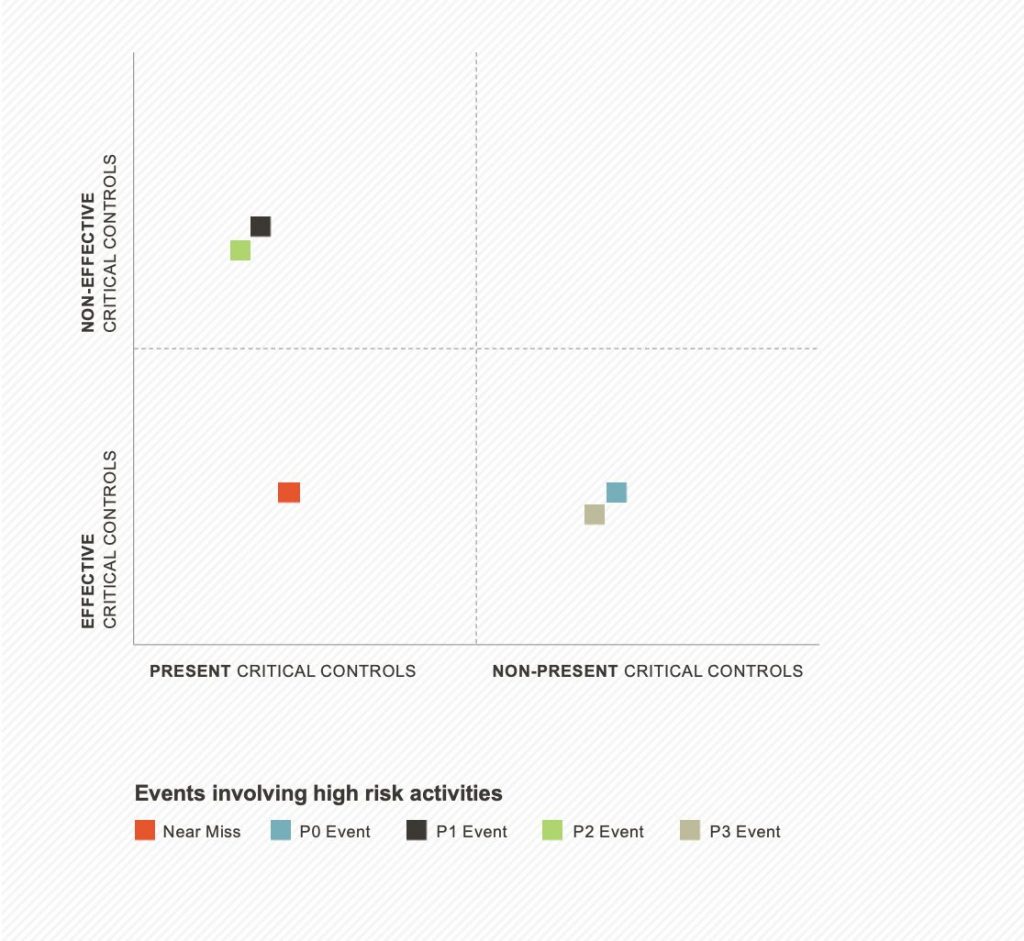
For example, the orange square in the bottom left quadrant represents a ‘near miss’ incident involving an HRA. In this case, the critical controls were both present and effective and prevented a P0, P1, P2 or P3 event from taking place. Any incident that falls in the other three quadrants would require immediate attention.
The cycle of learning and adjusting
As one of our key HSE principles is ‘learn’, we prioritise consistent learning before, during and after systems and processes are in place. We focus on four areas of learning in HSE:
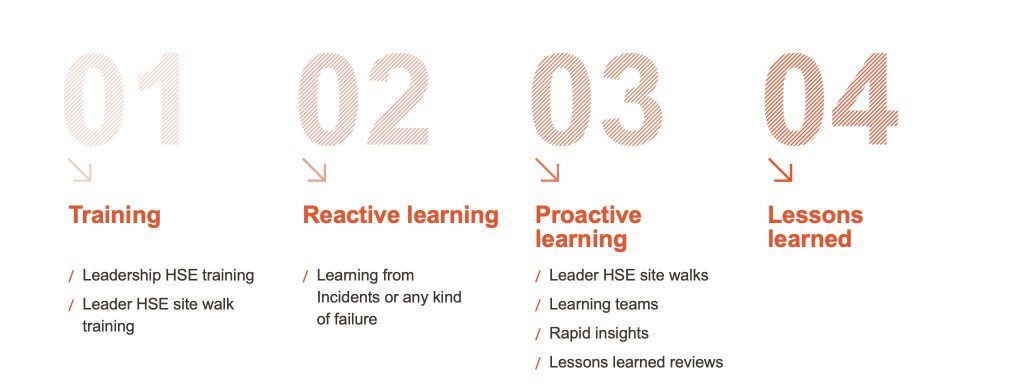
Proactive learning, for example, is all about seeking new ways to understand the HSE situation at our sites.
This involves leader HSE site walks, where leaders gain exposure to where the work is happening, ensuring better processes and communication.
We also bring together learning teams, ad hoc groups of subject matter experts who discuss a particular task or process to understand how it is working in practice.
Rapid insight is another type of group discussion on processes and opportunities among people with unique experience or insight on a given problem.
Finally, our lessons learned review identifies patterns and conditions that contributed to a certain HSE relevant situation.
Often, the reality of work looks different to how we imagine it. Our learning efforts (such as the proactive learning tools listed above) enable us to capture reality, providing opportunities to understand success and identify potential for failures.
How do we measure success in HSE?
Pinpointing meaningful leading indicators is one mystery HSE professionals are always trying to solve. As described in the previous two sections, we see managing HRA and learning as vital components of a successful, proactive HSE management system. As a result, one of our key performance metrics is building capacity to anticipate and learn, as well as to monitor our compliance and information gathering.
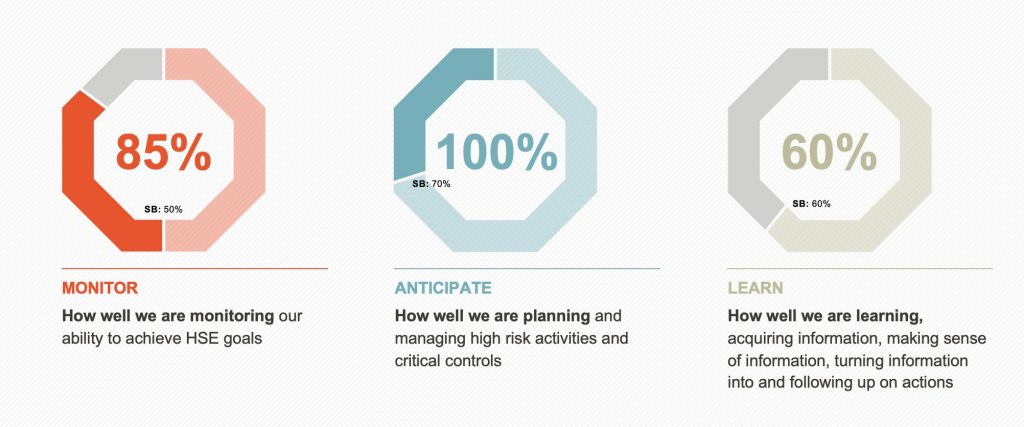
The idea is to give a comprehensive indication of how we are managing our projects or how much pressure we see in certain areas. For each capacity, we defined a safety boundary (SB), below which we are susceptible to incidents and therefore need to take immediate measures.
This way of measuring success in HSE was developed to better align performance scores with the reality on site for our workers. We are trialling Monitor, Anticipate and Learn capacity measurement with one of our projects and hope to see results by the end of this year.
What’s next in Yondr’s HSE journey?
While we are happy to commemorate the World Day for Safety and Health at Work, the journey and learning is never complete. Every day presents a new opportunity to improve HSE for our workers.
Our key principles – Respond, Monitor, Anticipate and Learn – guide every HSE decision we make as we strive to create systems that can succeed under varying conditions and to be resilient in our performance.
We are excited to continue testing our measurement of capacities as a leading metric, as well as to tackle upcoming initiatives like creating default paths when HRA critical controls fail and collecting reference points through training and action.
As long as there are high-risk activities to carry out and workers to keep safe, the job is never done. And Yondr will continue to do safety differently.
